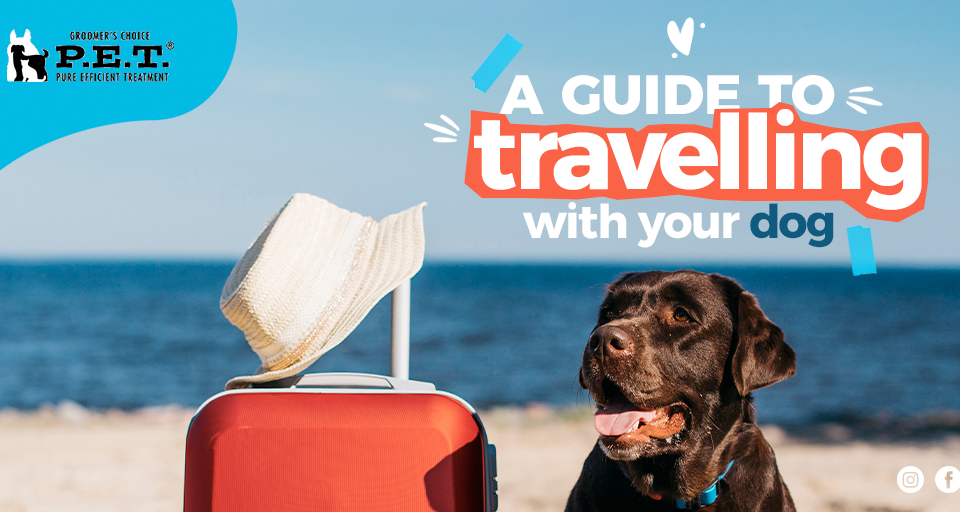
If you consider pets to be members of the family, why should your dog be left at home during the family vacation, right?
In some cases, your dog may actually be relieved to be left out of the festivities. Here are some things to consider when thinking about whether or not you should travel with your dog.
What Is Your Motivation for Travelling?
What do you plan to do during your travels? Are you visiting family? Will you be going to a tourist area and doing tourist things? Is this a business trip?
Try to think about how many hours a day you might be gone from your hotel room. On a vacation or a business trip, for example, your ability to go certain places or attend certain events may be limited if you have brought your dog along. If there’s anywhere your dog can’t go, you’ll have to leave him crated in the hotel or find a local sitter to watch him for a few hours.
You’ll want to have a very clear idea of your travel itinerary when travelling with a dog. Which restaurants will you go to? Will your dog be allowed, or will you have to swing by the hotel to drop him off? Don’t count on being able to leave him in the car. In fact, doing so may be illegal in some areas, and even on warm days a car can quickly overheat.
If you’re travelling to visit family, are there other dogs your dog will have to coexist with for the weekend? What’s your contingency plan in case things go wrong and the other dogs are not welcoming?
Travelling with dogs can be really fun, especially when they are an integral part of your family. But in some cases, it makes more sense to leave your dog out of your plans.
Behavioral Considerations
Does your dog have what it takes to cope with the stress of travel in the first place? Good travel companions typically have the following characteristics:
- Don’t mind being approached by other people
- Are not aggressive toward other animals
- Have excellent leash manners
- Can wait to urinate or defecate until given the opportunity
- Are not timid or scared of unusual noises or sights
- Can be crated without struggle or anxiety
If your dog needs some work in any of these areas, it may be uncomfortable travelling with you. Try a short day trip to test your dog’s mettle.
Travel Tips
If you do decide to travel with your dog, make sure you have him wear a collar with ID tags. Make him a new ID tag that has the address and phone number of the home or hotel where you will be staying. Or, wrap duct tape around his collar and write the information in permanent marker. Take the time to verify that his microchip information is also up to date.
Collaborate with your vet in advance in order to prepare any necessary paperwork for travel. You may be required to have a rabies certificate or a general health certificate even if travelling within the country.
Flying With Your Dog
Airlines have various requirements for health paperwork, and international flights will be the most complicated, depending on the rules of both the airline and the countries you will be stopping in.
If you are flying within Australia, consult the airline for their requirements. Often a 10 day health certificate is required, which you simply present to the airline when checking in your dog.
For international travel, the same health certificate is usually required, but sometimes the health check needs to happen within a shorter time frame (such as 48 hours before the flight). The admitting country may have an additional form for the vet to fill out. The paperwork then has to be signed by a vet from the Department of Agriculture and Water Resources and stamped with an official seal. To avoid any problems, it is wise to fax the paperwork to the airport vet in the admitting country to find out if your dog will be approved to enter. Even a small error can result in your pet not being admitted into the country. Some airlines will not allow your pet on the flight without such approval from the admitting country’s vet.
Once you successfully leave Australia for an international holiday with your dog, your next task is to ensure your dog can come home again. A health check will need to be performed again before your dog is allowed back in the country, and depending on which countries you visited, your dog may need additional testing or may not be allowed back in at all.
Sound complicated? International travel with pets is, unfortunately, quite a hassle and is probably not worth the stress if you are simply going away for a week. Australia’s Department of Agriculture and Water Resources has regional offices where you can pick up the paperwork you need and get advice on how to best travel with your dog.
Once all the paperwork is sorted out, you’ll need to help your dog travel comfortably. It’s wonderful if your pet is small enough to fly with you in the cabin, but large dogs need a travel crate and fly in the cargo area.
Your pet’s travel crate will be inspected for any banned items. It’s a good idea to freeze the clip-on water dishes overnight so that the water does not splash out during initial loading. Instead, the water melts slowly, giving your pet a fresh supply while travelling. Crates cannot be loaded with too much bedding, since airline staff need to be able to see the pet at all times. Choose a soft, absorbent and thin material to put in the crate with your pet.
Sedating pets before air travel is not recommended as it interferes with their blood pressure and heart function. Consult with your vet if you are concerned about your dog being stressed on a flight.
Car Travel Tips
Choose a safe way to secure your dog in the car for a long drive. Some dogs get twisted up in safety seatbelts, so be sure your dog is comfortable with these devices before you set off on your cross-country adventure. If there is room in your car, a travel crate is an excellent option, as it gives your dog a more den-like area to rest.

